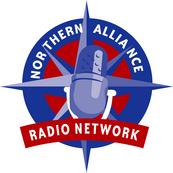An insurgency collapsing inward?
Make no mistake, the enemy still has a lot of fight left in him. He still has the capability to kill and to do damage. Yet, I want to point out there may be signs the insurgency is being squeezed into a region whose circumscribed boundaries are drawing inward. I'm not saying the insurgents can't operate outside this region, just that they are finding it harder to find areas outside this region where they can plan, move, and find shelter.
This is purely anecdotal evidence, obviously, but consider the fatalities the US has suffered in December. (I'm including deaths from hostile fire or IEDs, not accidents.) The source of the data is the Iraq Coalition Casualties page.
The biggest change in Iraq over the last year came as a result of the many operations along the Euphrates in western Iraq. Going back to the fight for Fallujah in November 2004, through the spring, summer, fall, to Operation Steel Curtain and Iron Hammer, the Coalition Forces have transformed that region. The key has been a permanent security presence, first with US forces, and now, increasingly, with Iraqi forces. That area has been noticeably quieter. None of the deaths in this table are in these western towns.
In northern Iraq, the fights for Mosul and Tal Afar have had a similar effect. Those cities are different places. Still not a paradise, but very different.
What is left to be done? The equivalent of the operations in along the western Euphrates needs to be done in the Sunni areas north of Baghdad, in the Ramadi-Fallujah corridor, and south of Baghdad. Here the Coalition Forces have not conducted operations like Steel Hammer, with a goal of clearing these areas and holding them with a permanent Iraqi security force.
I think the table reflects the changes I've mentioned. The hot spots for the insurgency are these areas closer to Baghdad, and this is way I say the insurgency is collapsing inward, in a sense.
The terrorists are being pushed out of safe havens in northern and western Iraq. The Kurdish areas in the north and the Shiite areas in the south have always been difficult areas for the Sunni insurgents to operate openly. So, the areas left to them are the ones closer to Baghdad.
The table reflects this. Again, albeit anecdotally. Certainly there are attacks across the theater. Though, as I mentioned in this post, there was a marked decrease in attacks in the Sunni provinces as a whole from October to November.
Baghdad is a central battlezone. The insurgents will contest the capital as long as they can to prove delegitimize the elected Iraqi government.
The Ramadi-Fallujah corridor is a constant source of activity. (The towns of Khaldiyah and Habbaniyah are between Ramadi and Fallujah. See this map.)
Mahmudiyah and Yusufiyah are south of Baghdad.
Balad, Taji and Baqubah are north or northeast of Baghdad and within 70 kilometers of Baghdad.
Bayji and Hawijah are in the finger of Sunni territory that runs north of Baghdad along the Tigris.
These areas, the Sunni finger along the Tigris, the Ramadi-Fallujah area, and the areas south of Baghdad have been the most difficult areas to subdue. They are the enemy's home turf. Yet, they are becoming where the insurgency will make its last stand.
The National Strategy for Victory in Iraq (available here) released in November lays out what has been happening in northern and western Iraq, and what might happen in these trouble spots.
The security portion of this strategy has three components.
This is exactly what Steel Curtain and other operations accomplished. This has not yet been achieved in the trouble spots, though there are certainly constant operations to disrupt the terrorists there. There are certainly many troops in Baghdad, but clearing such a large urban area is a difficult task. It will take more than military action alone, though, and the strategy lays out what we might see in these trouble spots.
The strategy details things that have been working, elements that will also be key to success in these difficult areas.
There is not time in this post to discuss how these elements are already present in the difficult areas, but if you followed this blog over the last few months, or other blogs such as ThreatsWatch or The Security Watchtower or The Mudville Gazette, you've seen the evidence.
In Ramadi, for instance, there has already been a focused effort to get that city under control. Construction such as was mentioned in the National Strategy is being done in Ramadi.
There is still work to be done, but the insurgency is feeling the pressure close in. The fight is now beginning for the heart of the enemy's territory, because for strategic purposes, it's all that's left to him.
Update: A Dec 30 press release from MNF-Iraq details operations that netted 109 terrorists and several weapons caches in northern Iraq between Dec 17 and Dec 29.
This is purely anecdotal evidence, obviously, but consider the fatalities the US has suffered in December. (I'm including deaths from hostile fire or IEDs, not accidents.) The source of the data is the Iraq Coalition Casualties page.
Breakdown of US fatalities by location
| City | Number |
|---|---|
| Baghdad | 18 |
| Fallujah | 10 |
| Taji | 7 |
| Ramadi | 4 |
| Yusufiyah | 2 |
| Khaldiyah | 1 |
| Balad | 1 |
| Hawijah | 1 |
| Mahmudiyah | 1 |
| Habbaniyah | 1 |
| Bayji | 1 |
| Baqubah | 1 |
The biggest change in Iraq over the last year came as a result of the many operations along the Euphrates in western Iraq. Going back to the fight for Fallujah in November 2004, through the spring, summer, fall, to Operation Steel Curtain and Iron Hammer, the Coalition Forces have transformed that region. The key has been a permanent security presence, first with US forces, and now, increasingly, with Iraqi forces. That area has been noticeably quieter. None of the deaths in this table are in these western towns.
In northern Iraq, the fights for Mosul and Tal Afar have had a similar effect. Those cities are different places. Still not a paradise, but very different.
What is left to be done? The equivalent of the operations in along the western Euphrates needs to be done in the Sunni areas north of Baghdad, in the Ramadi-Fallujah corridor, and south of Baghdad. Here the Coalition Forces have not conducted operations like Steel Hammer, with a goal of clearing these areas and holding them with a permanent Iraqi security force.
I think the table reflects the changes I've mentioned. The hot spots for the insurgency are these areas closer to Baghdad, and this is way I say the insurgency is collapsing inward, in a sense.
The terrorists are being pushed out of safe havens in northern and western Iraq. The Kurdish areas in the north and the Shiite areas in the south have always been difficult areas for the Sunni insurgents to operate openly. So, the areas left to them are the ones closer to Baghdad.
The table reflects this. Again, albeit anecdotally. Certainly there are attacks across the theater. Though, as I mentioned in this post, there was a marked decrease in attacks in the Sunni provinces as a whole from October to November.
Baghdad is a central battlezone. The insurgents will contest the capital as long as they can to prove delegitimize the elected Iraqi government.
The Ramadi-Fallujah corridor is a constant source of activity. (The towns of Khaldiyah and Habbaniyah are between Ramadi and Fallujah. See this map.)
Mahmudiyah and Yusufiyah are south of Baghdad.
Balad, Taji and Baqubah are north or northeast of Baghdad and within 70 kilometers of Baghdad.
Bayji and Hawijah are in the finger of Sunni territory that runs north of Baghdad along the Tigris.
These areas, the Sunni finger along the Tigris, the Ramadi-Fallujah area, and the areas south of Baghdad have been the most difficult areas to subdue. They are the enemy's home turf. Yet, they are becoming where the insurgency will make its last stand.
The National Strategy for Victory in Iraq (available here) released in November lays out what has been happening in northern and western Iraq, and what might happen in these trouble spots.
The security portion of this strategy has three components.
* Clear areas of enemy control by remaining on the offensive, killing and capturing enemy fighters and denying them safe-haven.
* Hold areas freed from enemy control by ensuring that they remain under the control of a peaceful Iraqi government with an adequate Iraqi security force presence.
* Build Iraqi Security Forces and the capacity of local institutions to deliver services, advance the rule of law, and nurture civil society.
This is exactly what Steel Curtain and other operations accomplished. This has not yet been achieved in the trouble spots, though there are certainly constant operations to disrupt the terrorists there. There are certainly many troops in Baghdad, but clearing such a large urban area is a difficult task. It will take more than military action alone, though, and the strategy lays out what we might see in these trouble spots.
* Localized post-conflict operations -- providing security, economic assistance, and support to civilian institutions in newly cleared areas -- further isolate enemy elements from the rest of the population and give Iraqis space to participate in a peaceful political process.
* Infrastructure protection helps ensure that the Iraqi government can collect revenues and provide basic services to the people, which is critical to building confidence in the government and weaning support away from insurgents.
* Putting capable Iraqis forward in the fight increases the overall effectiveness of U.S.-Iraqi operations, as Iraqis are better able to collect intelligence and identify threats in their neighborhoods.
* As Iraqi forces become more and more capable, our military posture will shift, leaving Coalition forces increasingly focused on specialized counter-terrorism missions to hunt, capture, and kill terrorist leaders and break up their funding and resource networks.
The strategy details things that have been working, elements that will also be key to success in these difficult areas.
* Significant progress has been made in wresting territory from enemy control
* Actionable intelligence is improving
* Iraqi forces are growing in number
* Iraqi forces are growing in capability
* Iraqis are committed to building up their security establishment
* Iraqis are taking on specialized missions central to overall success
* Iraq is building an officer corps that will be loyal to the Iraqi government, not a particular group or tribe
There is not time in this post to discuss how these elements are already present in the difficult areas, but if you followed this blog over the last few months, or other blogs such as ThreatsWatch or The Security Watchtower or The Mudville Gazette, you've seen the evidence.
In Ramadi, for instance, there has already been a focused effort to get that city under control. Construction such as was mentioned in the National Strategy is being done in Ramadi.
There is still work to be done, but the insurgency is feeling the pressure close in. The fight is now beginning for the heart of the enemy's territory, because for strategic purposes, it's all that's left to him.
Update: A Dec 30 press release from MNF-Iraq details operations that netted 109 terrorists and several weapons caches in northern Iraq between Dec 17 and Dec 29.








4 Comments:
At Fri Dec 30, 03:00:00 PM, Soldier's Dad said…
IMHO The insurgency is being squeezed into the boundaries between AOR's. MNF-NW and MNF-NC merged today.
General Webster alluded to a change in the TF Baghdad AOR during his press briefing today.
At Sat Dec 31, 01:00:00 AM, C.S. Scott said…
Good post Jeff, very informative. Interesting to look at the casualty figures by location, adds a little context.
At Sat Dec 31, 04:11:00 PM, Jeff said…
Lt. Smash linked to this post, and a commenter thought my argument was thin. I'll agree that purely taking fatalities statistics for December and using that to say the insurgency is making a last stand around Baghdad is thin. But that wasn't my intent.
That's why I tried to also look at what is happening, or not happening, elsewhere.
Nov 25 was the last fatality in one of the western Euphrates towns (Hit). There haven't been any US fatalities in the area of Steel Curtain since that operation ended. The last US fatality in Mosul was Nov 19.
Again, this isn't to say there will never be fatalities in the areas farther from Baghdad again, just that the ability of the insurgents and terrorists to project power there is diminished.
Security Watchtower has a post looking at other encouraging trends.
At Sat Dec 31, 04:16:00 PM, Maj D said…
By comparison, Kansas City, Mo, a city of less than 1/2 million, has suffered the murders of 11 American citizens this month. about 2/3 as many as were killed in Baghdad and more than were killed in Fallujah.
Post a Comment
<< Home